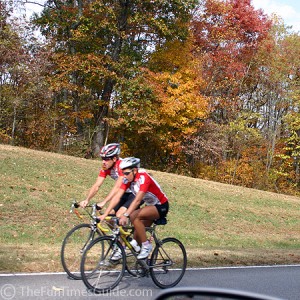 I haven’t written about bicycling before this but all of these matters of the body follow a similar pattern. Whether it concerns walking, standing, running or sitting— the posture we want to apply in all of these activities is remarkably the same.
I haven’t written about bicycling before this but all of these matters of the body follow a similar pattern. Whether it concerns walking, standing, running or sitting— the posture we want to apply in all of these activities is remarkably the same.
If you currently ride a bike, do you have a bicycling technique that you follow? Or do you just get on your bicycle and pedal away?
It is hard to have good bicycling technique if you don’t stand correctly. When we learn to stand correctly, we learn to do everything correctly. The first picture in the bible of my practice, Light on Yoga, is of tadasana, or mountain pose. Life is all about tadasana. The point of the yoga practice for me is to recreate tadasana in every pose. The same goes for bicycling.
Lately in my asana classes I have been teaching about the three sections of the body—arms, legs, trunk, and how they all want to be rock solid when moving through certain transitions. For instance when I move from down dog to plank, my trunk wants to be solid without any movement from one shape to the other. The only movement is the rotation of the leg and arm turning in the hip and shoulder sockets.
If I am in down dog and I bend my legs to lower from my hands to my knees there should be no movement of the spine in transition. The same work applies to many instances in life. We want the spine to move on demand and solidify on demand. All of our movement wants to initiate from the core, at the bottom of the spine- energetically moving from the center to the periphery so that when I am bicycling I want my spine to doing what it does in down dog and plank.
The problem with the casual athlete is that most of the techniques used for exercise tend to be the techniques we use for standing and walking. We bring our habitual patterns into most of our activities. The essential problem with most posture is tucking the pelvis- everything that goes wrong for most people physically stems from a misaligned pelvis.
Bicycling technique should mirror good standing. The spine should be aligned with four gentle curves extending as long as they can with the help of good core tone. It is easy to feel if you are biking from the quadriceps or from your core by checking to see if your pelvis is tucked or un-tucked. Another way to feel it is—is your lower back curved in towards the handle bars or is the pelvis tucking under and pulling the lower back out of its curve?
The difference between the two positions of the pelvis—tucked or un-tucked—determines if you are using you quadriceps or your core, specifically your psoas major. You would like to move from the core feeling the deep low belly with each stroke of the pedal. If the pelvis is tucked under the driving force of the work has to come from the legs.
Next time you take a bike ride pay attention to your bicycling technique. If you are tucking your pelvis you will be using your quadriceps and legs too much and if you have an un-tucked pelvis with a natural curve in your lower back you can be moving from the deep core of the body.
***
